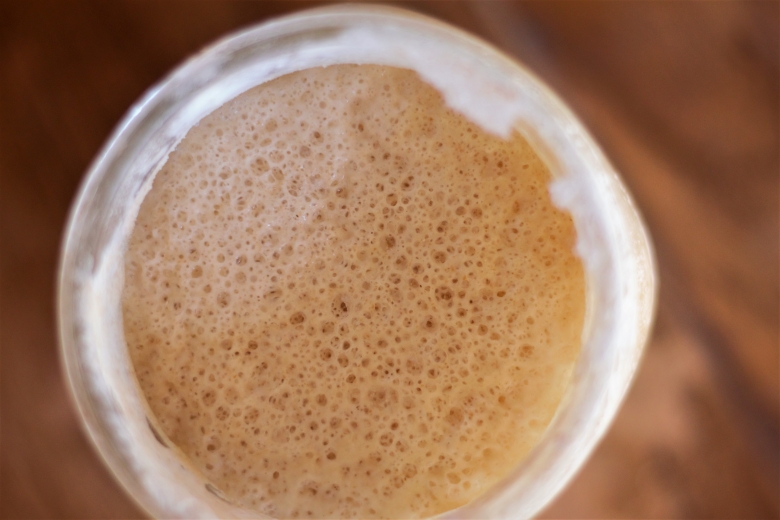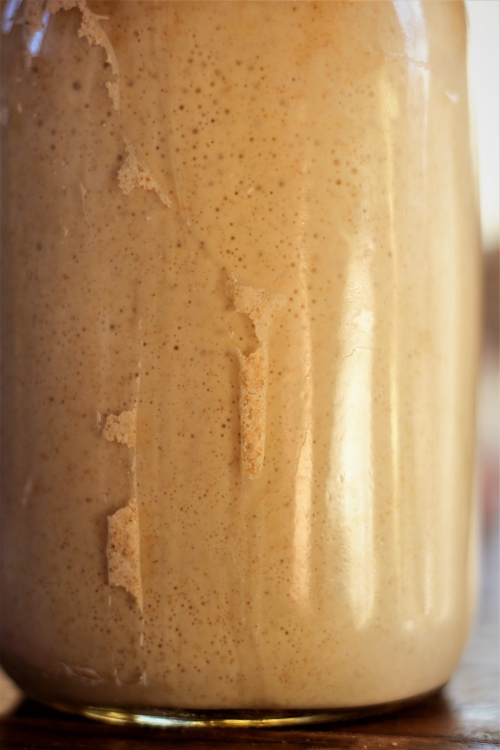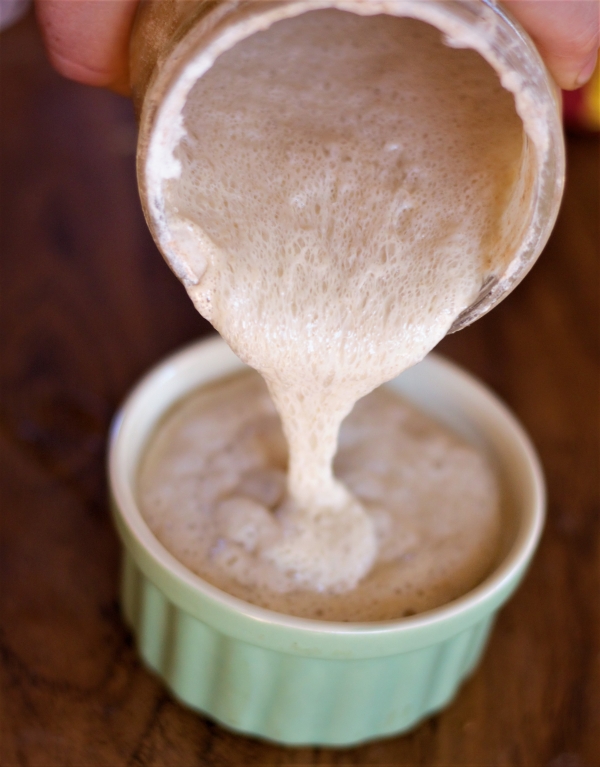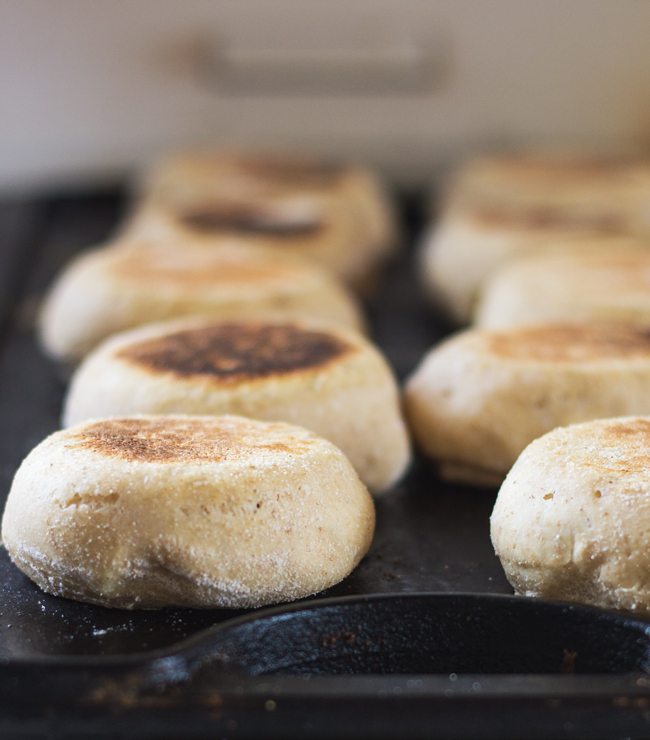Creating an “Active” Sourdough Starter for Better Fermented Bread (and three tips I wish I’d known)

About eight years ago now I began mixing flour and water and waiting for it to come to life. I had read about sourdough baking and, after a stint on the grain-free GAPS diet, we decided to give fermented breads a try.
Sadly, those loaves were nothing like the loaves we’d loved that were made with commercial yeast. So I took some time off from sourdough and we mostly just ate fermented porridges and whole grains and I kind of thought that maybe sourdough bread couldn’t be made at home like the commercial stuff you buy that claims sourdough but clearly used commercial yeast in the ingredients.

Our next foray into the world of naturally leavened breads came after I began working for Cultures for Health. I began researching and writing and developing sourdough recipes as one of the first assignments Julie gave me. I had a few more flops but to our great excitement I eventually came upon some really good loaves.
They were tangy and easy-to-digest but they were also light and well-risen, even the batches using 100% whole grain. There were boules and sandwich loaves and a whole host of gluten-free sourdough recipes as well.
The difference was mostly in the starter, I realized. Previously I had starters that doubled in volume and all of that jazz, but nothing that really brought the dough itself to life as I was hoping. After learning a few lessons – like starters really do need a consistently warm environment (75-85 degrees F) to build up a thriving colony of yeasts – things started to shift.

Imbibing your sourdough starter with plenty of bacteria is rather easy. It actually just kind of happens when you mix water and flour. But tipping the microorganism balance in favor of the yeasts really makes a big difference which is why I write about tips and tricks for this in Traditionally Fermented Foods.
One of the saddest things to me when it comes to fermented foods – and DIY projects in general – is how easily we get discouraged and give up. I’ve done it and heard from so many others who have as well. My hope with Traditionally Fermented Foods is to equip others with the biology and hands-on advice that might allay that discouragement. Because I’d love to see everyone fermenting… because I’ve seen how helpful it has been for our health and forwarding our pursuit of sustainability.

The Sourdough Tips I Wish I’d Known
If you’ve tried baking with sourdough starter and been disappointed like me, here are the things I wish I’d known when I first started:
- If your sourdough starter isn’t doubling and becoming light and bubbly within 4-8 hours, then it may not be vigorous enough for leavening bread. That 4-8 hour window is temperature dependent, so if this doesn’t speed up as temperatures rise, your starter isn’t as healthy as it could be. Work on developing a thriving starter before you throw in the towel on the loaves.
- Learn to work with high-hydration dough. Early on I was very familiar with the types of loaves you knead on a flour-dusted work surface until supple and no longer sticky. After working with gluten-free breads which are very wet, I started trying out sticky high-hydration doughs working with wheat flours. These breads develop their gluten matrix either through the fermentation time and/or a series of stretch and folds. During the final rise they rarely “double in bulk” as many commercial yeast recipes do, but if put into a hot oven when they have increased in volume by 50-70%, they almost always rise a great deal in the oven (oven spring).
- Use your starter at its peak. The photos above show a sourdough starter after about five hours and this is precisely the right time to use it in your sourdough bread recipe. It is at this point when it has doubled in volume. It is at this point when it has consumed a great deal of the starch in the flour and is therefore ready for another feeding. It is at this point when the balance of microorganisms are ideal for leavening bread.

These Sourdough English Muffins are something I worked on for probably a couple of years, off and on, and finally found success with the above tips. They are filled with nooks and crannies and are leavened solely with sourdough starter – no baking soda or baking powder necessary. They are tangy and easy on the belly and taste a whole lot like that brand from the grocery store that we are all so familiar with.
This recipe plus various other long-fermented loaves, rolls, and flat breads – either whole grain or gluten-free – can be found in the Grains chapter of Traditionally Fermented Foods, coming May 9th.

This is exciting information. I cannot wait for your book to come out so I can give it a try once again. 🙂
I’ve already pre ordered your book and can’t wait to get it!
Your new book is on my wish list for my birthday in June 🙂 I am excited to read more on sourdough and veggie ferments… both things I have been dabbling in but have yet to make a part of our regular lives. Thanks for another great post 🙂
Sarena – Thanks for your comment! I hope you enjoy the book and that it is a blessing to you in your endeavors.
I learned to make sourdough from a friend who always said you don’t need to use yeast because yeast spores are in the air just looking for a place to land. She was right about that. I put the flour and a little sugar with warm water on the back of my stove and waited and it bubbled and bubbled and when it was ripe with fermentation, I made the best sourdough bread ever. I still make it the same way and it is still as good as that first batch. I feed it from time to time. Of course, I inherited my grandmother’s bread pans and her mixing bowl and I believe the yeast from her kitchen from all those years of making breads came with those pans and that bowl. I also inherited my great grandmother’s crock and even though I have made kraut in gallon jars, I still use that crock when I have more cabbage than I can fill in the gallon jars and I have fermented other vegetables in it as well. There’s something about established colonies in old cookery that bring tried and true cooking to its best.
Dear Shannon,
I’ve got your book recently and since I’m a complete novice to the art of fermentation I’ m learning a lot from it because it’s very clearly explained and to the point. So, it’s great you’ve taken your time to share your knowledge and I feel really lucky to have come across it. Big thank you. So far, I’ve made the basic fermented self brining vegetables and I can’t wait to try them.
I have two questions regarding two recipes: the kosher dill pickles, do I have to layer them vertically? As for the sourdough starter, days four to seven do I have to add the same amount of water and flour as done in days one to three? Thank you again. Your book has taken me to a new level I have never imagined before.